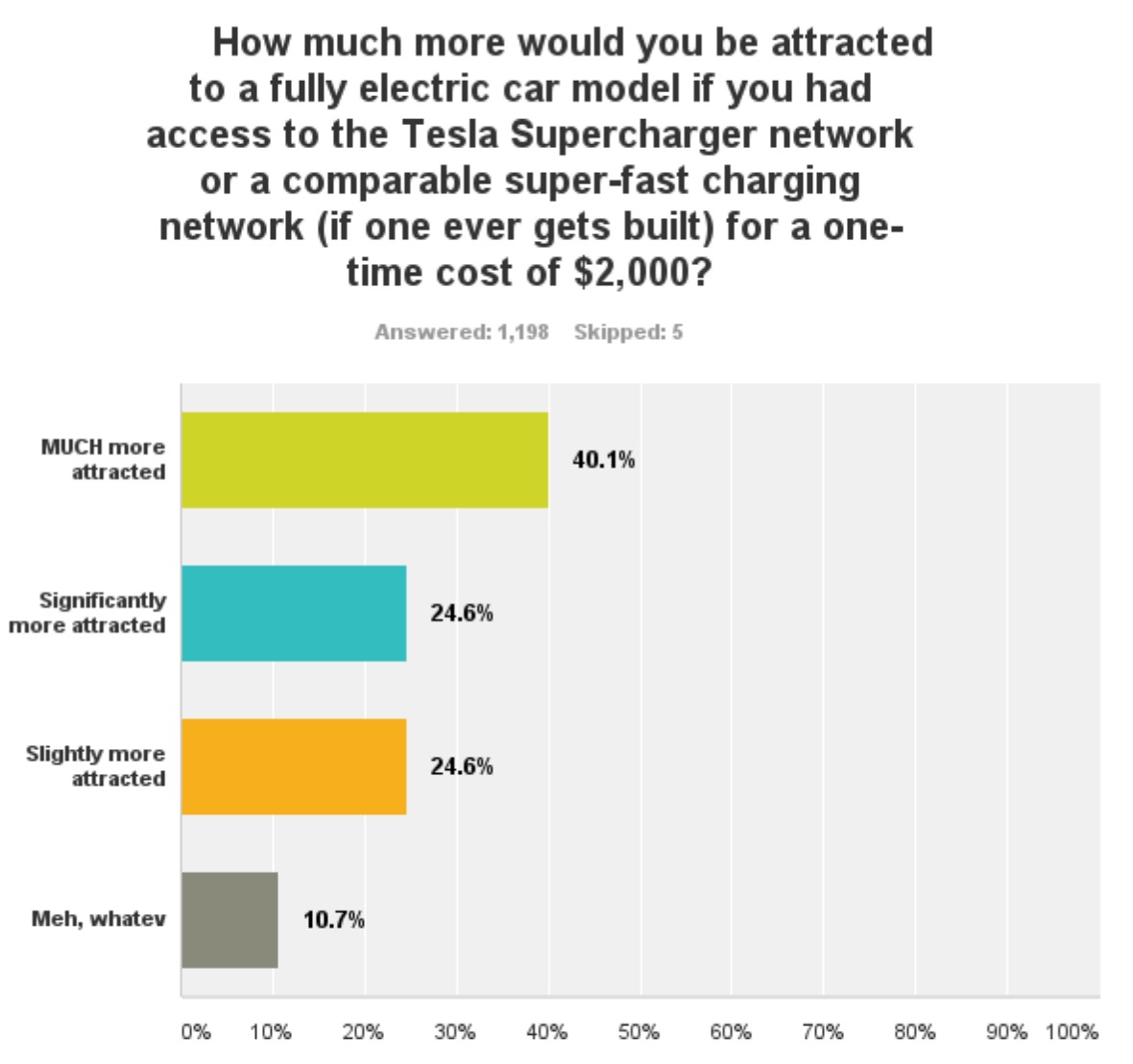CLEAN TECHNICA
This report explores the preferences current electric car drivers and potential buyers have regarding electric car models, classes, special features, range, battery options, and more. It also takes a deep dive into key consumer benefits of electric cars and the best ways to promote broader electric car adoption.
The electric car market has been growing exponentially in the past few years. But it is still a small percentage of the new car market in most places, typically representing less than 1% of new car sales. What is needed to grow electric car sales to a majority of new car sales? What types of cars and what features will dominate in such a market? When will we reach that milestone?
“Early adopters” and “first followers” will lead us into an electric future, as they do with every technology transition. The sooner they get what they want, the sooner electric cars will become mainstream products that the majority of new car buyers are choosing. These early buyers illuminate broad consumer needs and desires that we often don’t consider simply by theorizing. Getting their feedback sooner rather than later can help companies and governments save time and money, while guiding them along the most effective path into the future.
Through four different surveys completed by over 2,000 people, we have gathered useful and unique insight into what existing and potential electric car owners and lessees want from their electric cars, charging infrastructure, and local policymakers. This report details the minimum electric driving range that people want from fully electric and plug-in hybrid electric cars, their range–price “sweet spot,” specific features they want or require in an electric car, their preferred car classes, and specific electric car models they intend to buy or lease. The report also delves into preferences regarding buying or leasing and how these options have been split amongst early adopters.
External to the cars, the report offers insight into electric car charging preferences and habits, solar power adoption, the attraction of different government incentives, and electric car business models that respondents think will most effectively advance the electric car revolution.
The report also explores what early adopters and first followers consider to be electric cars’ greatest benefits and attractions — matters which might help automakers, electric car advocates, and policymakers more effectively grow the electric car customer base.
The surveys conducted for this report also delve into more obscure but important matters, such as the ability to upgrade a car’s battery in future years, access to Supercharging, DC fast-charging capability, autonomous driving options, and over-the-air software updates, among other things. Demographics such as respondent gender, household income, number of cars in the household, and location also offer some interesting insights.
Wrapping up the report, we discuss a potential “EV revolution” — specifically, expectations for when electric cars will account for 10% and then 50% of new car sales, as well as a brief presentation on disruptive technologies and technology adoption curves.
Is the future electric? We think so. The only question is — how fast will we get there?
…
Charging Habits, Desires, & Areas of Opportunity
The other side of the range coin is charging. With inductive, wireless charging lining the highways, short range wouldn’t matter. With cars that have several hundred miles of range, destination charging is probably all you’d need. Of course, we’re currently somewhere in between these two extremes. Since we just discussed range, let’s tackle charging
I’ve already covered charging in a few sections of this report, and I think it’s useful to recap the highlights in order to quickly show how charging is a double-edged sword for electric cars.
First of all, we found that convenient home charging was one of the key benefits of an EV lifestyle. It was the fourth most popular benefit of EVs according to EV drivers, with 11% choosing it as their favorite benefit. Non-EV owners/lessees put it as #2 overall, only trailing the climate and air quality benefits of EVs.
On the other hand, EV drivers put “ more abundant EV charging” as the #1 way to promote EV adoption and advance the EV revolution (24.4% of respondents chose that option). Potential owners/ lessees put that as the second-best solution, only behind “better financial incentives.”
When asked about the importance of Tesla’s Supercharger network (or some comparable super-fast charging network), 65% of potential owners indicated they would be significantly more attracted to a fully electric model if it had access to Tesla Superchargers or something comparable. (Note that Tesla’s Superchargers charge a car about twice as fast as the next-fastest DC fast chargers on the market .) Only 11% of 10 respondents didn’t care about having access to such a network.
I also asked this question but in relation to a PHEV/EREV. As would be expected, the importance of access to Tesla’s Supercharger network or some comparable super-fast charging network was not so strong. However, some respondents still considered it a big deal. 22% of potential owners indicated they would be significantly more attracted to a PHEV/EREV model if it had access to Tesla Superchargers or something comparable. 26% stated they’d be slightly more attracted to such a model. 52% of respondents didn’t care about having access to such a network.
About Clean Technica
cleantechnica.com
“CleanTechnica strives to be (er… remain) the most indispensable website on the planet for cleantech news and commentary. We have been covering the cleantech industry obsessively since 2008, before it was popular for mainstream media to dedicate blogs or subdomains to the topic, and we are now a well-recognized leader in this field.”
Tags: Alternative Fuel, Clean Technica, Electric Cars, Electric Vehicles, EV, EV Charging, EV Obsession, EVs, Gas2, survey, Tesla, Tesla Model 3







 RSS Feed
RSS Feed